Wondering about how to convert exFAT to FAT32 on Windows 10? While using Windows, you may have come across these two file extensions and yes NTFS too for sure. exFAT and FAT32 are both used for file allocation although they offer completely different functionalities.
So, before we learn how to change exFAT to FAT32 without formatting your device, let’s get a basic understanding of these two popular file systems used on Windows.
Also read: How To Fix Volume Does Not Contain A Recognized File System Error On Windows 10
FAT32
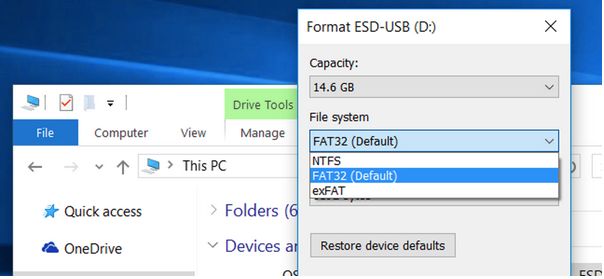
FAT32 is an acronym for File Allocation Table and is a commonly used File System on Windows OS. FAT32 was developed by Microsoft back in 1977 and since then it is known for offering great compatibility with Windows. The FAT32 file system is also commonly used on external storage media including USB flash drives, portable hard drives, SD cards, and other portable storage devices.
EXFAT32
exFAT is the Extended File Allocation Table introduced by Microsoft back in the year 2006. exFAT is almost similar to FAT32 but there’s one major difference you should know. exFAT32 has no limits on file size or partition size, like FAT32. So, you can think of exFAT as a modern replacement for FAT32.
FAT32 is compatible with the older versions of Windows as well. Hence, compatibility is one of the main reasons why users might need to switch between exFAT and FAT32.
Also read: How to Fix File System Error on Windows 10
How to Convert exFAT to FAT32 without Formatting?
Several ways can help you convert exFAT to the FAT32 file system without losing your data or formatting your disk drive.
Before you begin, we still recommend you to take a quick backup of all important files and documents, just to be sure.
1. Using Windows Disk Management Tool
You can use the Disk Management tool to convert exFAT to FAT32 in just a few simple steps. Disk Management is a built-in tool on Windows that allows you to create disk partitions, delete partitions, extend/format/shrink disk partitions on your device. Follow these quick steps to get started.
Launch the Start menu search box, type “Disk Management” in the search box, and hit Enter.
In the Disk Management window, right-click on the partition with exFAT file extension and select the “Format” option from the context menu.
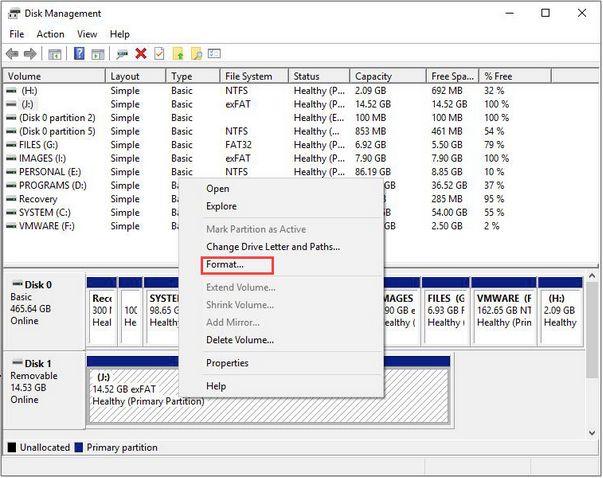
In the pop-up window, change the file system type value to “FAT32”. Check on the “Perform a Quick Format” option. Performing a quick format will completely erase the contents of the disks but we can easily recover it by using a data recovery tool. (Refer to the latter section of the post)
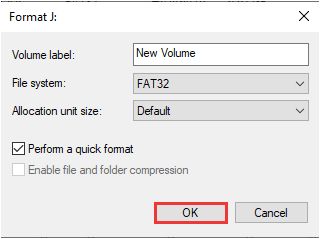
Press the OK button to proceed.
The disk formatting process will begin automatically. Windows will pop up a notification alert on the screen to confirm if you’re sure about erasing the disk’s contents. Hit the OK button to proceed.
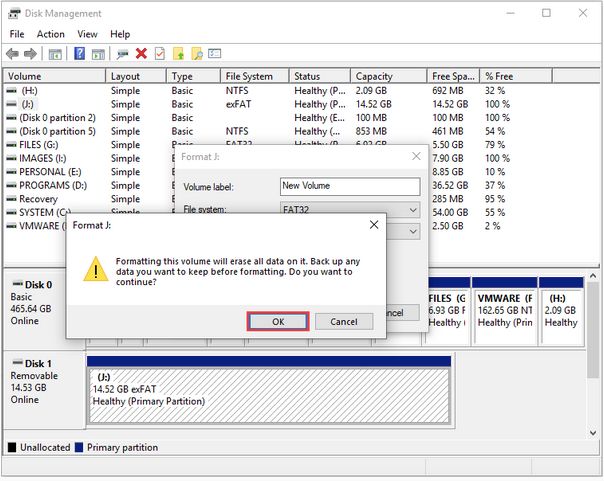
Once the formatting process is completed, the file system will be changed to FAT32. You can verify the same on the main interface of the Disk Management window.
You can use the same set of steps to convert exFAT to FAT32 on other disk partitions as well.
Once you’re done, close the Disk Management window.
2. Using Command Prompt
You can also use the Command Line tool to convert exFAT to FAT32. Here’s what you need to do.
Launch the Start menu search, type “Command Prompt”, right-click on it, and select “Run as Administrator”.
In the Command Prompt window, type the following commands:
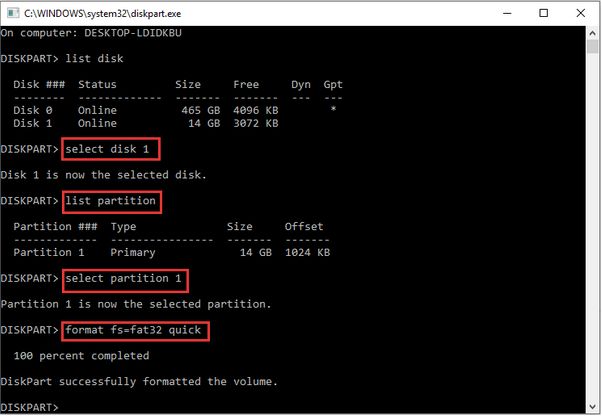
List disk
Select Disk * (The preferred disk whose file system needs to be converted to FAT32)
List partition
Select Partition *
Format fs=FAT32 quick
After executing the above-mentioned commands, the file system of the specified disk will be converted to FAT32 format.
3. Use a Third-party drive Formatting Tool
The third method to convert exFAT to FAT32 is by using a third-party drive formatting tool. A variety of disk formatting tools are available online that can help you get the job done, without losing your data.
MiniTool Partition Wizard is one of the best drive formatting tools you can use for changing the exFAT32 into FAT32.
Download and install the MiniTool Partition Wizard tool on your Windows PC. Launch the tool once the installation process is completed.
First, pick the exFAT partition from the main window that needs to be converted. Then select the “Format Partition” option from the left menu pane.
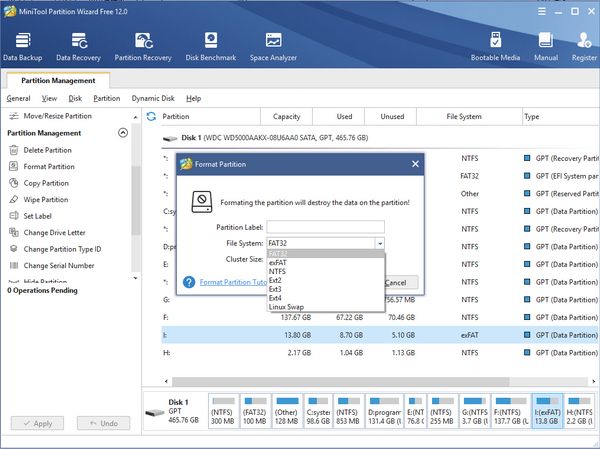
From the pop-up window, select the “FAT32” option, hit the OK button to confirm.
Tap on the “Apply” button placed at the bottom. The moment you hit the APPLY button, the conversion process will begin.
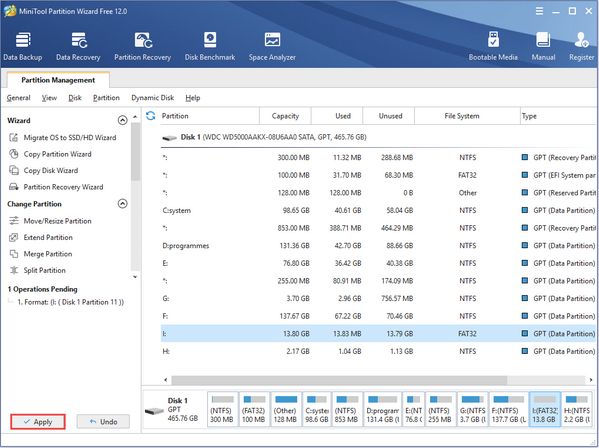
In just a few seconds, the file system will be converted to FAT32 format by following the above-mentioned steps.
Download Advanced Disk Recovery on Windows to Recover Lost Data
Lost your data while converting exFAT into FAT32 file system? Don’t worry! Download the Advanced Disk Recovery tool on your Windows PC to instantly recover lost/formatted data in just a few clicks.
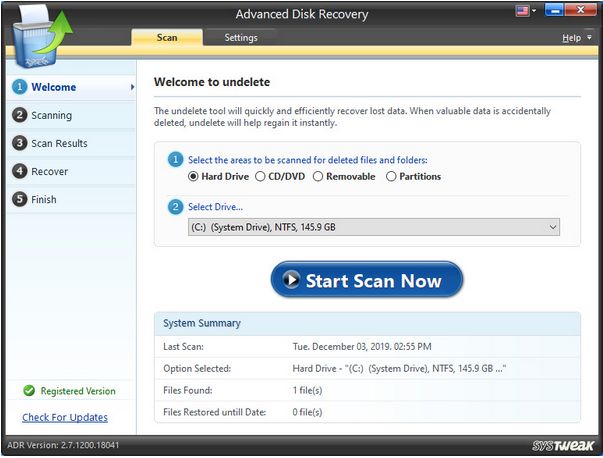
Advanced Disk Recovery is one of the best data recovery solutions for Windows that allows you to restore lost/deleted/formatted data from disk partitions and external storage media, including USB sticks, SD cards, portable hard drives, and more.
Also read: EaseUS Data Recovery VS Advanced Disk Recovery: Which Is The Best
How can I convert exFAT to FAT32 without losing data?
One of the most secure ways to convert exFAT32 to FAT32 file system is by using quick formatting. You can use any of the above-listed methods for conversion. Even if you lose the files, you can use a data recovery solution to retrieve back your lost data.
How do I convert my 64GB USB to FAT32?
To convert the 64GB USB to FAT32, follow these steps:
- Connect the USB flash drive to your PC.
- Open File Explorer.
- Right-click on the USB flash drive, select “Format”.
- Select “FAT32” as the file system.
- Press the OK button to begin the conversion process.
Conclusion
So fellas here were a few ways to convert exFAT to FAT32 without losing your data. You can use any of the above-mentioned methods to convert the file system of any disk partition or external storage device. And don’t worry about losing your precious data! Advanced Disk Recovery can easily help you recover lost/formatted data in just a few steps. You can first begin by using any of the above-listed ways to convert the file system and then download the data recovery solution to retrieve lost data.




 Subscribe Now & Never Miss The Latest Tech Updates!
Subscribe Now & Never Miss The Latest Tech Updates!
Colin
only file types I’m being given the option for are NTFS and exFAT, there is no FAT32 listedDheeraj Manghnani
Hi Colin, Try using the Windows Disk Management Tool and you wil get the FAT32 option.